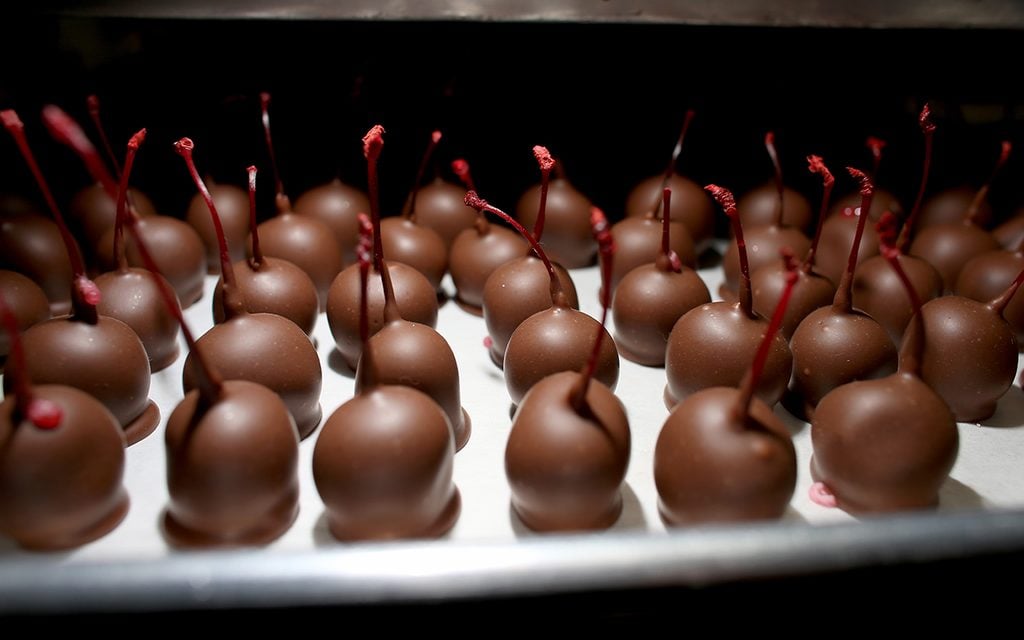Here’s What’s REALLY Inside Those Chocolate-Covered Cherries
Updated: Nov. 05, 2020

We got to the bottom—or the center—of one of your most pressing culinary questions.
It’s no secret that chocolate-covered cherries are one of our favorite sweet treats. There’s something about the sweetness of the chocolate combined with the tartness of the fruit that makes for the perfect dessert…or mid-afternoon snack.
But if you’re anything like us, when you bite into one, you might wonder what’s at the center of it all. Sure, there’s a cherry, but there’s also that glorious gooshy texture—what’s up with that? This is what’s at the heart of each scrumptious candy.
The Answer Might Surprise You
Turns out, that liquid center contains an ingredient you likely don’t know by name, but you definitely know some of the other things in which it’s found (most confectionery chocolates and fondant, to be precise). That sweet center is made of an enzyme called invertase. A chocolatier’s “secret ingredient,” invertase helps separate glucose and sucrose, which helps make the center of chocolates even creamier.
Where does it fit into the chocolate-covered cherry? Well, most recipes require the cherry to be covered with fondant before dunking it in chocolate, and that fondant frequently contains invertase. That invertase then reacts to liquefy the fondant as the cherries sit, and, voila! You have a liquid, sugary center.
Should I Have It In My Kitchen?
First, if you’re worried about invertase in your foods, don’t be. The enzyme is naturally occurring and is even found in our saliva, so you can keep eating chocolate-covered cherries without fretting about consuming a strange chemical. If you’re now debating whether or not to keep invertase on hand, well, that depends. If you frequently make chocolate-covered, fondant-based desserts, it might be worth picking up a bottle; you can order it from Amazon.
